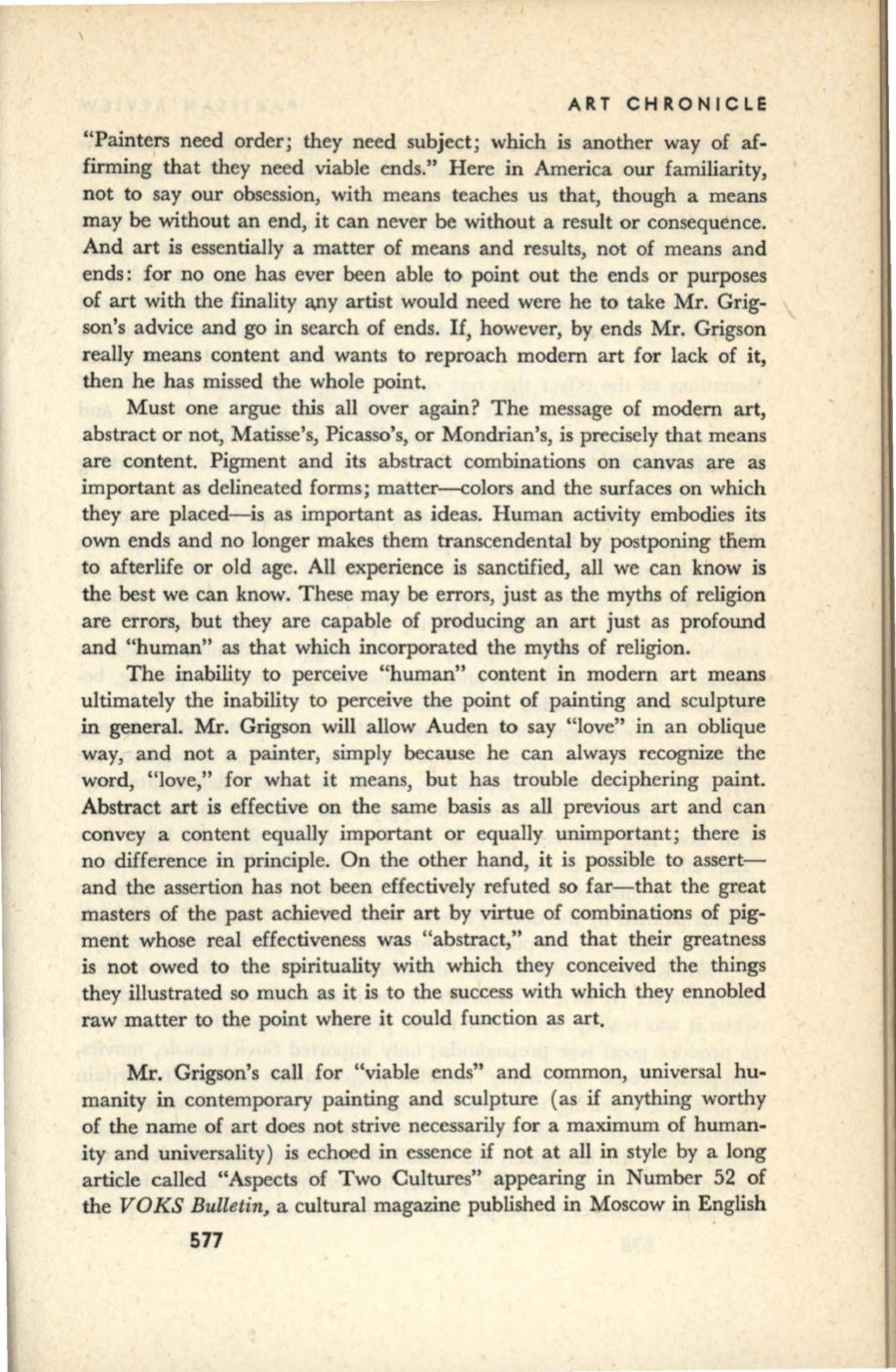
ART CHRONICLE
"Painters need order; they need subject; which is another way of af–
firming that they need viable ends." Here in America our familiarity,
not to say our obsession, with means teaches us that, though a means
may be without an end, it can never be without a result or consequence.
And art is essentially a matter of means and results, not of means and
ends: for no one has ever been able to point out the ends or purposes
of art with the finality a.ny artist would need were he to take Mr. Grig–
son's advice and go in search of ends.
If,
however, by ends Mr. Grigson
really means content and wants to reproach modern art for lack of it,
then he has missed the whole point.
Must one argue this all over again? The message of modern art,
abstract or not, Matisse's, Picasso's, or Mondrian's, is precisely that means
are content. Pigment and its abstract combinations on canvas are as
important as delineated forms; matter--colors and the surfaces on which
they are placed-is as important as ideas. Human activity embodies its
own ends and no longer makes them transcendental by postponing tliem
to afterlife or old age. All experience
is
sanctified, all we can know is
the best we can know. These may be errors, just as the myths of religion
are errors, but they are capable of producing an art just as profoWld
and "human" as that which incorporated the myths of religion.
The inability to perceive "human" content in modern art means
ultimately the inability to perceive the point of painting and sculpture
in
general. Mr. Grigson will allow Auden to say "love" in an oblique
way, and not a painter, simply because he can always recognize the
word, "love," for what
it
means, but has trouble deciphering paint.
Abstract art is effective on the same basis as all previous art and can
convey a content equally important or equally unimportant; there
is
no difference in principle. On the other hand, it is possible to assert–
and the assertion has not been effectively refuted so far-that the great
masters of the past achieved their art by virtue of combinations of pig–
ment whose real effectiveness was "abstract," and that their greatness
is not owed to the spirituality with which they conceived the things
they illustrated so much as it is to the success with which they ennobled
raw matter to the point where it could function as art.
Mr. Grigson's call for "viable ends" and common, universal hu–
manity in contemporary painting and sculpture (as
if
anything worthy
of the name of art does not strive necessarily for a maximum of human–
ity and universality) is echoed in essence if not at all in style by a long
article called "Aspects of Two Cultures" appearing in Number 52 of
the
VOKS Bulletin,
a cultural magazine published in Moscow in English
577


